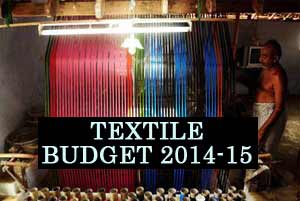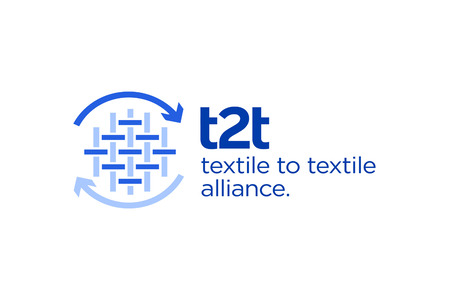
Union Budget 2014-2015 intents to bring Acche Din for textiles
YarnsandFibers News Bureau 2014-07-15 10:59:00 – MumbaiThe Narendra Modi government, which has sought 60 months from the Indian electorate to bring good days, in its first budget exuded its intent to kick start the investment cycle to nurse India's ailing economy back to good health. Coming amid high expectations from the textile and garment industry, the Finance Minister Arun Jaitley, in his maiden Union Budget 2014-15, charmed the industry participants with an array of encouraging proposals.
The Narendra Modi government, which has sought 60 months from the Indian electorate to bring good days, in its first budget exuded its intent to kick start the investment cycle to nurse India's ailing economy back to good health. Coming amid high expectations from the textile and garment industry, the Finance Minister Arun Jaitley, in his maiden Union Budget 2014-15, charmed the industry participants with an array of encouraging proposals.
The Central Plan for Ministry of Textiles has been fixed at Rs 4,326 crore for 2014-15, about Rs 425 crore higher than the revised estimates for 2013-14, but Rs 305 lesser than the budget estimates for that year. A major portion of this has been allocated for Technology Upgradation Fund Scheme (TUFS) at Rs 2,300 crore. Comparatively, TUFS has got Rs 344 crore more than what was spent last year but Rs 100 lesser than what was intended for spending in 2013-14.

Following is a glimpse of a slew of surprises from Jaitley’s pitara for the Textile Industry:
Increased Budgetary Allocation under TUFS: The Finance Minister provided a roadmap and direction for growth of labour-intensive textiles industry by increasing budgetary allocation under Technology Upgradation Fund Scheme (TUFS) to Rs 2,300 crore.
ABOUT TUFS: Technology Upgradation Fund Scheme(TUFS) is one of the flagship schemes of the Ministry of Textiles and has helped the industry to garner investments of Rs. 243,000 crore. The scheme was launched in 1999 and has been instrumental in helping India achieve new heights in the development of the textile sector and particularly in the spinning segment.
In his Budget Speech of February, 2013, the Finance Minister had announced continuation of TUFS in the 12th Plan with a major focus on modernisation of the powerloom sector. Higher subsidies for weaving / powerloom sector have accordingly been planned in the continued TUFS.
The textiles industry is provided credit at minimum rates both in the organized and the unorganized sector. In the 12th Plan period (2012-17), the past government had approved Rs 11,900 crore for the continuation of TUFS.
Setting up of six Textile Clusters: The government proposed to set up mega textile clusters at Varanasi, Bareilly, Lucknow, Surat, Kuttch, Bhagalpur, Mysore and one in Tamil Nadu with a sum of Rs 200 crore.
Applauding the Union Budget 2014-15, Union Minister Santosh Kumar Gangwar said that “this is a forward-looking Budget for all including the textile industry.”
“The Budget recognizes the aspirations of a new India which is looking towards the government for decisively moving towards high growth, low inflation and more jobs.” Gangwar noted adding that this budget aims for a 7 per cent or higher growth rate in a sustained manner within the next few years and will also usher in macro-economic stability in the near future.
Echoing Gangwar, B K Mishra, Chairman and Managing Director of Cotton Corporation of India Ltd., said, “We welcome government’s Rs 200 crore Budgetary Support for setting up six textile mega clusters at Bareilly, Lucknow, Surat, Kutch, Bhagalpur, Mysore and Tamil Nadu, which is a positive for the sector.
Fillip to the Readymade Garments:
- To encourage exports of readymade garments, the FM announced an increase in duty free entitlement for import of trimmings, embellishments and other specified items from 3 percent to 5 percent of the value of their exports. Hailing the move, spandex manufacturer Indo Rama Industries Head, Business and Operations, YC Gupta said, “We were losing to large players who were directly importing spandex yarn. We will now be at par with these companies.” Spandex is the stretch material used in finished products such as stretch denim, swimwear and leggings.
- The government has fixed textile export target at US$50 billion (over Rs 300,000 crore) for the year, of which 40 per cent is for readymade garments. The industry experts believe that this will provide export opportunities for the industry players.
Taxes and Duties proposals
- Basic Customs Duty on raw materials (PTMEG etc.) required for manufacturing of spandex yarn reduced from 5 percent to Nil.
- To encourage new investment in the chemicals and petrochemicals sector, the Budget has reduced the basic customs duty on reformate from 10 percent to 2.5 per cent; on ethylene, propylene, and ortho-xylene from 5 per cent to 2.5 per cent.
- To exempt PSF and PFY manufactured from plastic waste and scrap PET bottles from excise duty with effect from 29th June, 2010 to 7th May, 2012. However, such PSF and PFY will be levied excise duty of 2 per cent without Cenvat benefit and 6 per cent with Cenvat benefit from the specified date.
Adding to it, the government proposed faster clearance of import and export cargo which will help in minimizing transaction costs and improving business competitiveness.
The FM also announced exemption of cotton transport loading and unloading services from the purview of service tax. Thanking the government for this initiative, T Rajkumar, Chairman of the Southern India Mills’ Association (SIMA) said the development will offer considerable relief to the industry and also to cotton growers.
Hand to Handloom Sector
- In a move to carry forward the rich tradition of handlooms of Varanasi, the FM announced to set up a Trade Facilitation Centre and a Crafts Museum with an outlay of Rs 50 crore to develop and promote handloom products.
- Government also proposed to set up a Hastkala Academy for the preservation, revival, and documentation of the handloom/handicraft sector in PPP mode in Delhi, for which it has set aside a sum of Rs 30 crore.
- Further, to provide employment to the people of Jammu and Kashmir, the government proposed to invest Rs 50 crore to start a Pashmina Promotion Programme and a programme for the development of other crafts in the state.
Someone has rightly said that “It’s impossible to please everyone.” While the Union Budget 2014-2015 succeeded in fetching praises from almost the entire textile industry, there seemed to be a few who expected some more from the newly appointed Finance Minister. No mention of the continuance of interest subvention in the Budget was seen as a negative by some as the garment sector was expecting an announcement of three per cent interest subvention on packing credit, which expired on 31 March 2014.
All in all, Jaitley passed the litmus test as the Finance Minister, at least of the textile industry.
Market Intelligence
Ask for free sample Report

experience
Customer Base
dedicated team
Countries Served Worldwide









